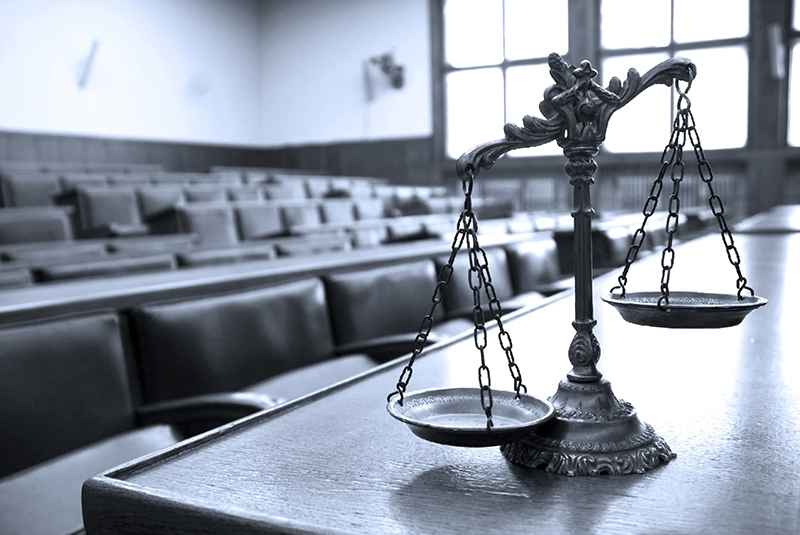Leading Federal Appeal Attorneys: Your Partners in Browsing the Appeals Process
Leading Federal Appeal Attorneys: Your Partners in Browsing the Appeals Process
Blog Article
Demystifying the Process of Federal Appeals: What You Need to Know
Navigating the detailed realm of government charms can commonly feel like going across undiscovered waters for those strange with the procedure. Recognizing the nuances of appellate court territory, the complexities of filing a notice of allure, providing an engaging brief, and making an influential oral disagreement are vital components that can dramatically impact the outcome of a case. By deciphering the layers of complexity surrounding government allures, people can gain a clearer understanding right into the systems that govern this important stage of the lawful system.
Recognizing Federal Appeals Process
Looking into the complex world of the federal charms process reveals a structured and methodical journey through the judicial system - federal white collar crime appeal lawyers. Federal allures act as a critical system for reviewing choices made by reduced courts. Comprehending this process is essential for any individual included in lawful procedures at the federal level
The procedure generally starts with a celebration dissatisfied with a lower court's judgment submitting a notification of allure. This sets off a testimonial by a greater court, where a panel of judges examines the lawful arguments provided by both celebrations. Briefs laying out the lawful reasoning behind each event's setting are submitted, and dental disagreements may be heard to make clear complicated concerns.
The appellate court's choice is based on a thorough examination of the lower court's proceedings and the disagreements provided. When the appellate court gets to a choice, it can affirm, turn around, remand, or change the reduced court's ruling, giving clarity and finality to the lawful disagreement.
Appellate Court Territory Clarified

Appellate courts have territory over specific types of situations, commonly those involving lawful mistakes, procedural problems, or questions of law instead of factual conflicts. The territory of appellate courts is typically described in statutes and regulations that regulate the court system. Understanding appellate court territory is vital for parties associated with the appeals process as it identifies whether a situation is eligible for evaluation and the degree to which the appellate court can interfere in the lower court's choice.
Declaring a Notice of Charm
The initial step in beginning the government allures procedure entails filing a Notification of Appeal with the ideal appellate court. federal white collar crime appeal lawyers. This important document officially informs the court and the other celebrations included in the instance that the appealing party plans to seek an evaluation of the lower court's decision. Submitting a Notification of Appeal is a strict step-by-step demand that establishes the appellate procedure moving
When preparing the Notification of Charm, it is vital to make certain compliance with the details regulations and standards of the relevant appellate court. The document must generally include details such as the situation name, the lower court's name, the date of the judgment being appealed, and a succinct declaration indicating the premises for the appeal.
When filing a Notice of Charm,Timeliness is of the significance. Missing out on the due date for sending this record can lead to the appeal being rejected, emphasizing the importance of accurate and prompt initiation of the charms procedure. It is suggested to seek legal support to navigate the intricacies of submitting a Notification of Appeal successfully.
Instruction and Oral Disagreement
In the appellate procedure, offering written briefs and taking part in dental debates play critical duties in promoting for the appealing party's position before the appellate court. Briefs are detailed lawful documents that describe the parties' arguments, legal authorities, and evaluation supporting their placements. These created entries supply the court with a detailed understanding of the truths of the instance, the pertinent regulation, and why the appealing celebration believes the lower court's decision should be reversed.
Adhering to the submission and review of the briefs, oral disagreements provide the parties an opportunity to further clarify their positions, address any concerns the appellate judges may have, and highlight bottom lines from their composed briefs. Dental disagreements are a possibility for the attorneys to persuade the courts via verbal advocacy and reactions to inquiries from the bench.

Getting the Appellate Court Choice

Final Thought
Recognizing the appellate court jurisdiction, filing a notice of allure, preparing briefs, and offering oral disagreements are all crucial components of this procedure. Ultimately, getting the appellate court choice can provide clearness and resolution to lawful disputes.
As we progress from comprehending the government allures procedure to studying the complexities of appellate court territory, an essential element comes to light relating to the authority and restrictions of these greater courts in the lawful landscape. Appellate court territory refers to the extent of cases that a specific appellate court has the power to assess and decide upon. Unlike test courts that hear situations for the very first time, appellate courts are limited to evaluating decisions made by lower courts. Understanding appellate court jurisdiction is important for celebrations involved in the appeals procedure as it figures out whether a case is eligible for testimonial and the extent to which the appellate court can intervene in the reduced court's choice.
Whether the appellate court affirms, turns around, or remands the reduced court's decision, comprehending the effects of the ruling is crucial for all events involved in the appellate process.
Report this page